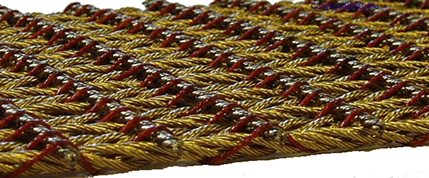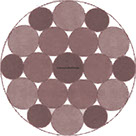Steel Cord Belt with Metal Weft
Steel Cord Belt with Metal Weft . The illustration shows a 7×7 (7 strands of 7 wires) open type steel cord with four different wire diameters.
The advantage of open type steel cords is the high gumming of the cord gaps – for higher steel cord pull-out strength, better corrosion prevention, and dynamic stability.
The Steel Cord Belt with Metal Weft filling factor for high-class steel cords is approximately 0,6. This is contrary to ropes for cranes, for instance, where a highest possible share of steel of the effective steel cord cross-section is desired. In other words, high-class steel cords for conveyor belts have a bigger diameter.
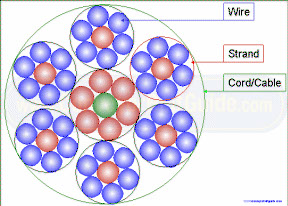
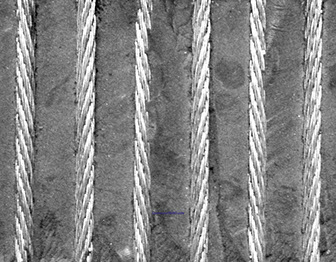
In a steel cord conveyor belt, Z and S lay steel cords are used alternately to ensure a straight running behaviour of the belt.
The illustration shows a regular lay. On the left side it is sZ and on the right zS. S stands for left-hand twist, Z for for right-hand.
The lay length of the sheath is the length along the strand in order for a wire to make one complete revolution around the king wire, expressed in mm.
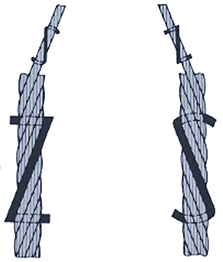
Other than the usual “open cords“, where wire diameters are chosen such that a gap emerges between the different wires within one layer, there are other types of strands, for example the Warrington style: composed of filaments with different diameters, twisted together in one single operation with one single lay length. The filaments (wires) fit nicely into a circle.
It has a smaller diameter but less rubber inside.
By the way: The term “cord” – an assembly of strands twisted together – is globally used, although in North America, “cable” is more common. A “rope” is made of textile fibers.
A twisted steel cord because of a production failure.
It is of high importance to protect the steel cords from damages by fretting or corrosion. This is usually achieved by choosing the right cord construction, fire zinc coating and full gumming.
The photograph shows an ungummed conveyor belt steel cord after 10000 bendings and storage in water for 24 hours. It shows chafe marks with frictional corrosion and zinc hydroxide.
A typical value for the hardness of the steel cord is about 160 HV.
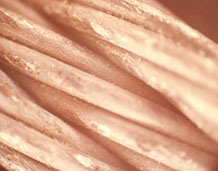
Woven or mesh steel cord belts (see photograph), first launched under the trademark Fleximat, are capable of being cured on a textile conveyor belt production line. This has certain cost benefits.
On the negative side is a poorer troughability and more difficult alignment.
The splice efficiency is lower than with normal steel cord conveyor belts.
